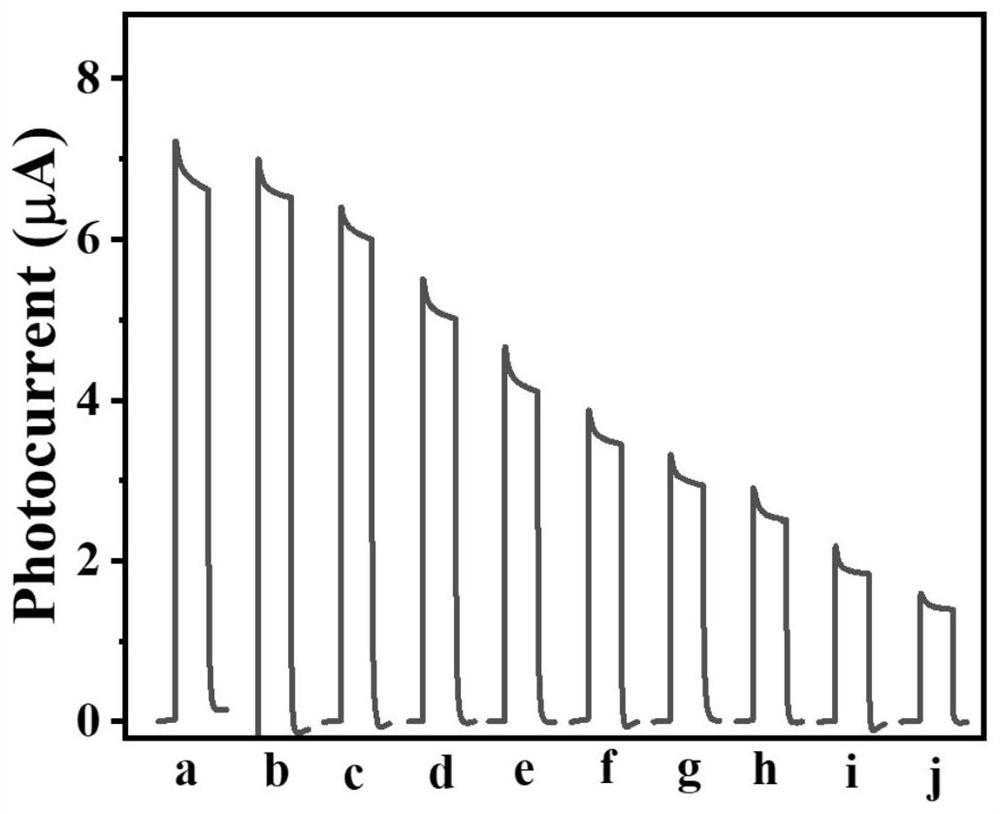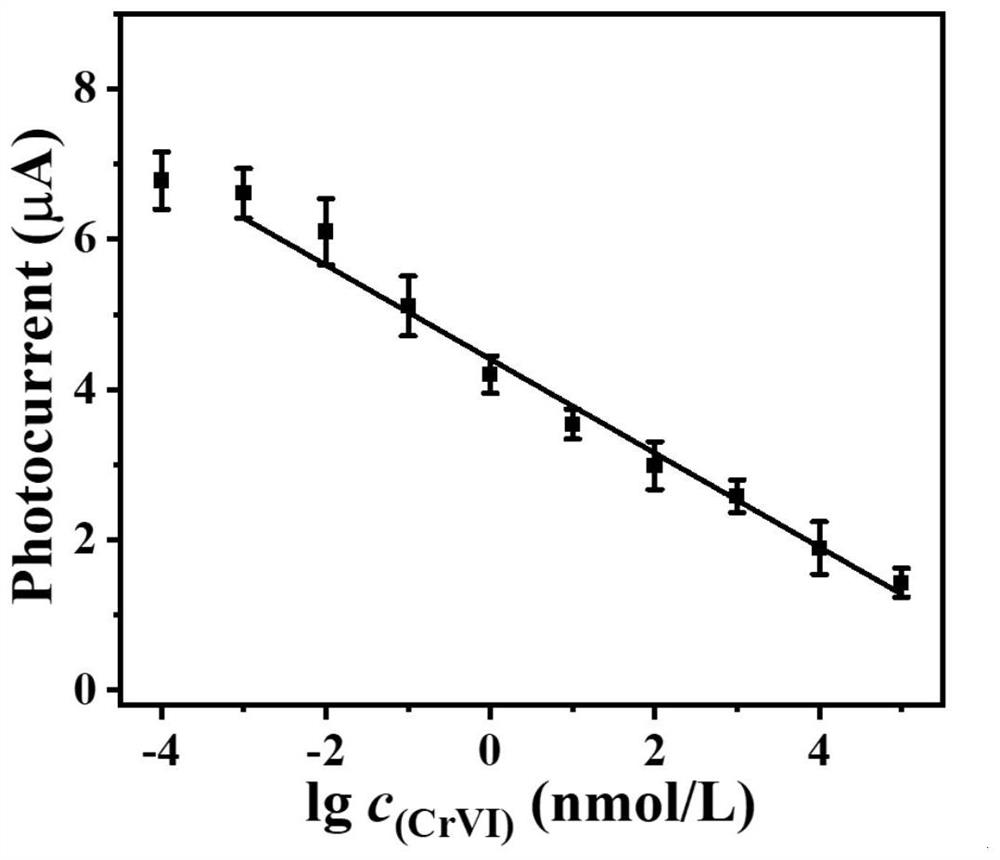Method for detecting Cr (VI) in water body based on MXene/SnS2 functional composite material
A functional composite material and water body technology, applied in the direction of analysis of materials, material electrochemical variables, material analysis through electromagnetic means, etc., can solve problems such as water body environmental water body hazards, hereditary genetic defects, human health damage, etc., to achieve excellent Biocompatibility, fast analysis speed, low cost effect
- Summary
- Abstract
- Description
- Claims
- Application Information
AI Technical Summary
Problems solved by technology
Method used
Image
Examples
Embodiment 1
[0035] Step 1. (0.1wt%) MXene / SnS 2Preparation of functional composites:
[0036] Take 5mL of deionized water and 2.5mL of ethanol and mix them evenly in a beaker, then weigh 0.875g of crystalline tin tetrachloride and 0.564g of thioacetamide, respectively, and add them to the beaker of the mixed solution of water and ethanol. Ultrasonic for 10min; take 175 μL of the existing MXene aqueous solution with uniform dispersion and add it to the above mixed solution, ultrasonicate for half an hour until the dispersion is uniform; transfer the mixed dispersion to a 20mL polytetrafluoroethylene reaction kettle, at a constant temperature of 150 ℃ The heating reaction was carried out in an oven, and the temperature was kept for 2 h; after cooling to room temperature, the obtained brown-yellow powder was centrifuged, washed with deionized water and absolute ethanol for several times, and dried at constant temperature to obtain (0.1wt%) MXene / SnS 2 Functional composite material; after th...
Embodiment 2
[0040] Step 1. (0.2wt%) MXene / SnS 2 Preparation of functional composites:
[0041] Take 5mL of deionized water and 2.5mL of ethanol and mix them evenly in a beaker, then weigh 0.875g of crystalline tin tetrachloride and 0.564g of thioacetamide, respectively, and add them to the beaker of the mixed solution of water and ethanol. Ultrasound for 10 min; take 350 μL of the existing uniformly dispersed MXene aqueous solution and add it to the above mixed solution, ultrasonicate for half an hour until the dispersion is uniform; transfer the mixed dispersion to a 20 mL polytetrafluoroethylene reaction kettle, at a constant temperature of 150 ° C The heating reaction was carried out in an oven, and the temperature was kept for 2 h; after cooling to room temperature, the obtained brown-yellow powder was centrifuged, washed with deionized water and absolute ethanol for several times, and dried at constant temperature to obtain (0.2wt%) MXene / SnS 2 Functional composite material; after t...
Embodiment 3
[0045] Step 1. (0.4wt%) MXene / SnS 2 Preparation of functional composites:
[0046] Take 5mL of deionized water and 2.5mL of ethanol and mix them evenly in a beaker, then weigh 0.875g of crystalline tin tetrachloride and 0.564g of thioacetamide, respectively, and add them to the beaker of the mixed solution of water and ethanol. Ultrasonic for 10 min; take 700 μL of the existing uniformly dispersed MXene aqueous solution and add it to the above mixed solution, ultrasonicate for half an hour until the dispersion is uniform; transfer the mixed dispersion to a 20 mL polytetrafluoroethylene reaction kettle, at a constant temperature of 150 ° C The heating reaction was carried out in an oven, and the temperature was kept for 2 h; after cooling to room temperature, the obtained brown-yellow powder was centrifuged, washed with deionized water and absolute ethanol for several times, and dried at constant temperature to obtain (0.4wt%) MXene / SnS 2 Functional composite material; after t...
PUM
| Property | Measurement | Unit |
|---|---|---|
| Concentration | aaaaa | aaaaa |
Abstract
Description
Claims
Application Information
 Login to View More
Login to View More - R&D
- Intellectual Property
- Life Sciences
- Materials
- Tech Scout
- Unparalleled Data Quality
- Higher Quality Content
- 60% Fewer Hallucinations
Browse by: Latest US Patents, China's latest patents, Technical Efficacy Thesaurus, Application Domain, Technology Topic, Popular Technical Reports.
© 2025 PatSnap. All rights reserved.Legal|Privacy policy|Modern Slavery Act Transparency Statement|Sitemap|About US| Contact US: help@patsnap.com


